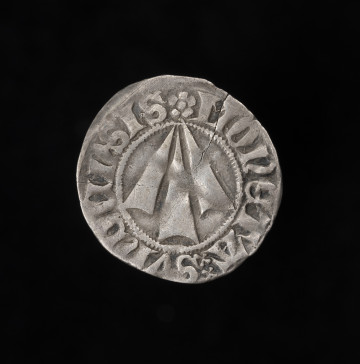
Groschen (Kreuzgroschen)
1613
National Museum in Szczecin
Part of the collection: Pomeranian coins
At the dawn of the 16th century, Stralsund entered into a fierce dispute with Duke Bogislaw X (1454–1523) over the city's minting rights, granted in 1325. As part of his efforts to reorganise coinage in the unified Duchy of Pomerania, the duke sought to force the city to cease minting its own coins. The conflict was resolved through a compromise reached in 1504. The treaty signed in Rostock allowed Stralsund to retain its minting privileges but with restrictions. The city was required to adhere to the ducal minting standard and was prohibited from striking coins when the ducal mint was not in operation. Under the agreement, the primary currency was the schilling, minted from an alloy containing 6.5 lötige silver (406/1000 fineness). Although the silver content had been reduced from the earlier 7¾ lötige (484/1000 fineness), the design of the coins remained largely unchanged since around 1416, when they were first introduced. The obverse continued to feature an arrow and an inscription referencing the new Sundisch coin, while the reverse displayed a cross pattee with a religious motto. The key innovations included the addition of dates, slightly expanded legends, and extra symbols in the corners of the cross, distinguishing individual emissions. Notably, ducal symbols never appeared on Stralsund’s coinage. These schillings were minted in significant quantities between 1503 and 1522. After this period, Stralsund’s minting activities came to a halt for sixteen years. Genowefa Horoszko
Author / creator
Object type
coin
Technique
coining
Material
silver
Origin / acquisition method
acquisition
Creation time / dating
Creation / finding place
Owner
The National Museum in Szczecin
Identification number
Location / status

1613
National Museum in Szczecin

1367 — 1380
National Museum in Szczecin

1429 — 1440
National Museum in Szczecin
DISCOVER this TOPIC
National Museum in Lublin
DISCOVER this PATH
Educational path